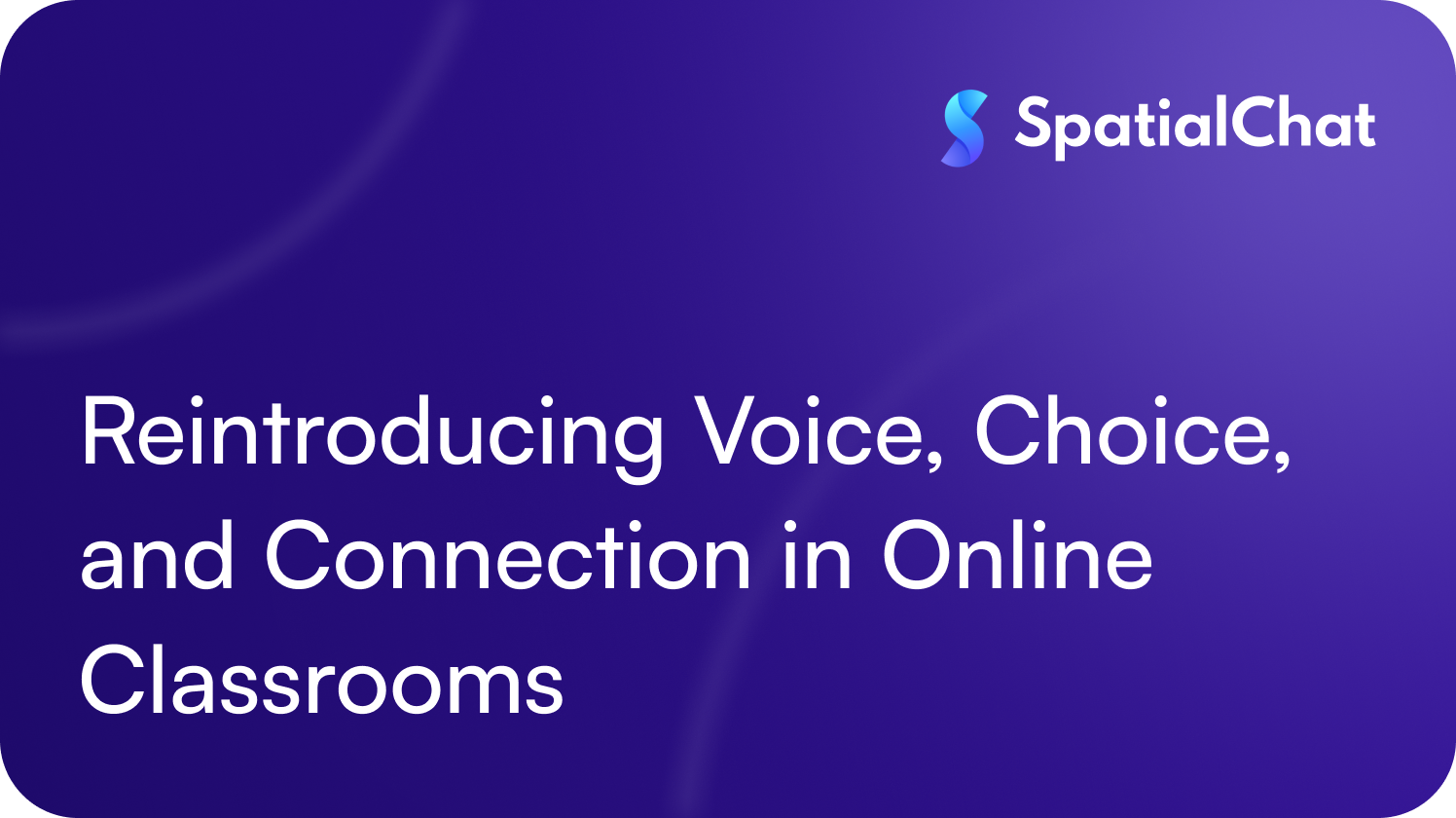What sets SpatialChat apart from Zoom, Class, Engageli, and the rest of the virtual classroom and conferencing tools out there?
It’s a question we hear all the time. Some differences are instantly clear the moment you step into a SpatialChat session—free movement, visually linked breakout rooms, customizable spaces, and seamless collaboration tools that make the digital environment feel alive and intuitive.
But what truly makes SpatialChat a game-changer in virtual education goes deeper—into the very fabric of how we experience sound.
Unlike traditional platforms, SpatialChat treats audio as dynamic and multidirectional. With spatial audio, students can engage in multiple conversations simultaneously, just like they would in a physical classroom. They can move freely, join group discussions, or break away for side conversations—without the jarring interruptions that come from spotlighted speakers or muted mics.
Most importantly, no one’s voice gets flattened or cut off. Overlapping dialogue isn’t a bug—it’s a feature. SpatialChat makes space for the natural rhythms of communication: the affirming “yeah”s, the thoughtful “mmhm”s, and the subtle cues that drive conversation forward, build group consensus, or invite respectful disagreement.
This isn’t just a clever feature—it’s a vital piece of what makes learning feel human again.
So why does this matter so much? Why is this different from the virtual tools we’ve come to tolerate?
Scroll through any major news outlet and you’ll likely stumble on a think piece lamenting the decline of higher education. During the pandemic, many educators were forced into platforms built for business meetings—not learning—and it showed. The world caught a glimpse of teachers struggling to conform to a "featured speaker" role that doesn’t reflect how modern education actually works.
But here’s what we believe: education isn’t dying. It’s evolving. And educators are still one of humanity’s most enduring forces for growth. At SpatialChat, we don’t see education as something to disrupt or overhaul. We see it as something worth preserving—at its most powerful, most interactive, and most human.
Let’s take a moment to acknowledge what was lost during the pandemic. We lost lives. We lost time together. We lost community, connection, shared spaces, and all the fleeting, meaningful interactions that happen in between the formal parts of learning—in hallways, during office hours, in quiet study corners and chance conversations. We lost people, in every sense of the word.
And if you look closely at the virtual classroom platforms that rushed in to fill the gap, you’ll see those same losses reflected. Not because the tools themselves failed, but because they weren’t designed for people. They were designed for presentations, not presence. For speaking at, not engaging with.
Every educator knows: if teaching were only about delivering information, then yes—Wikipedia or a pre-recorded video could suffice. But that’s never been the point of education. And it’s never been our purpose at SpatialChat.
The platforms trying to “optimize” education by removing educators, automating instruction, and flattening nuance will inevitably run into a hard truth: real learning is—and always has been—a human endeavor. It's built on dialogue, curiosity, relationships, and the messy, magical process of making meaning together.
That’s where SpatialChat comes in.
We’re here to support educators in bringing their full selves—their insight, empathy, creativity, and skill—into the virtual space. Not to replicate a classroom, but to reimagine it in a way that keeps human connection at the center.
Because the true magic of learning happens in the overlaps—in the lives that intersect within a classroom. It’s in the casual comments that spark new insights. The affirmations that quietly build confidence. The thoughtful disagreements that challenge perspectives. The kind of energy you can feel growing in the room when a discussion takes off and students lean in.
In every great lesson, there’s a tension—a question worth pursuing, a conflict to explore, an idea that invites debate. SpatialChat is built to hold that tension and support those moments. Not just from the loudest voice, but from every voice.
We believe education thrives in context. In connection. In community. And we believe in the educators making that possible every single day.
If you're ready to experience a platform that puts people first—where conversations grow naturally, curiosity has room to breathe, and every student has a voice—we invite you to try SpatialChat for yourself. Let’s build better classrooms, together.
